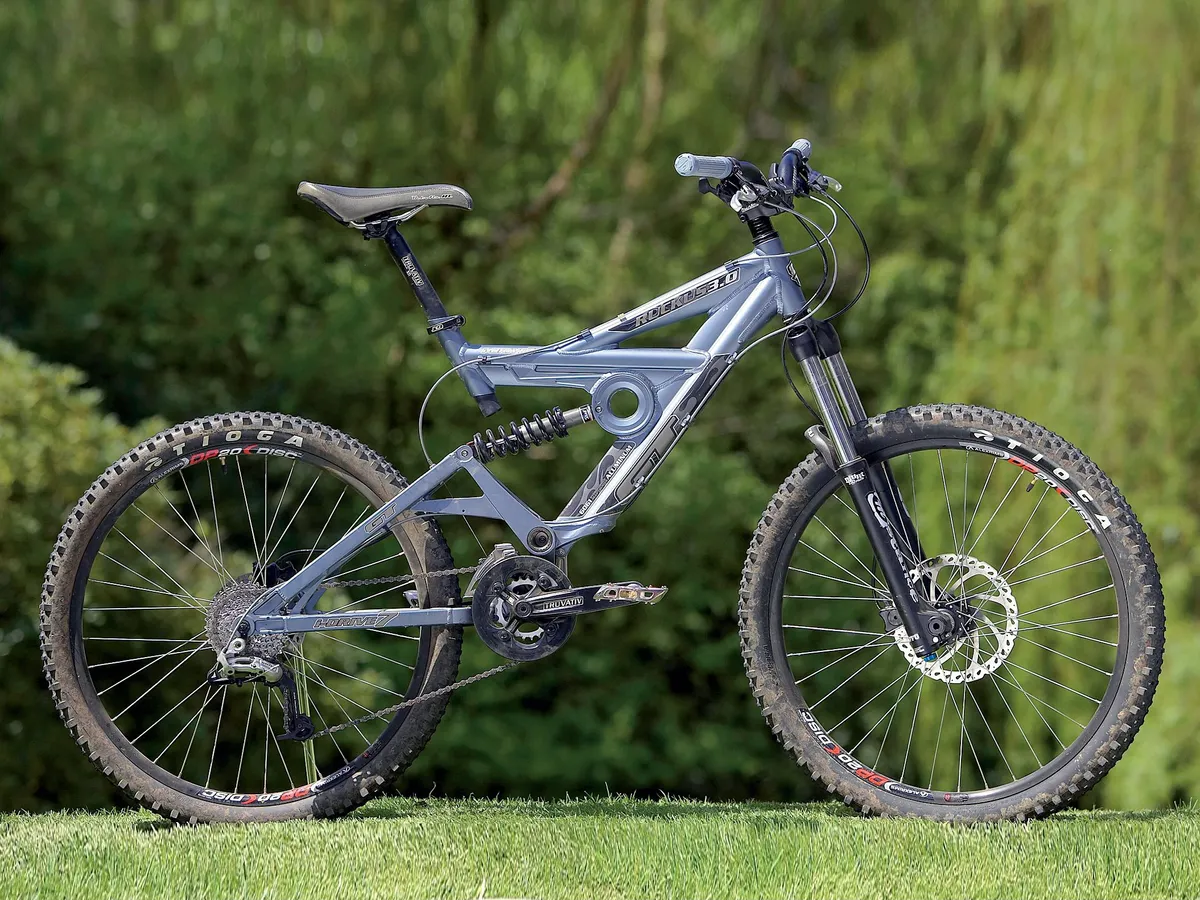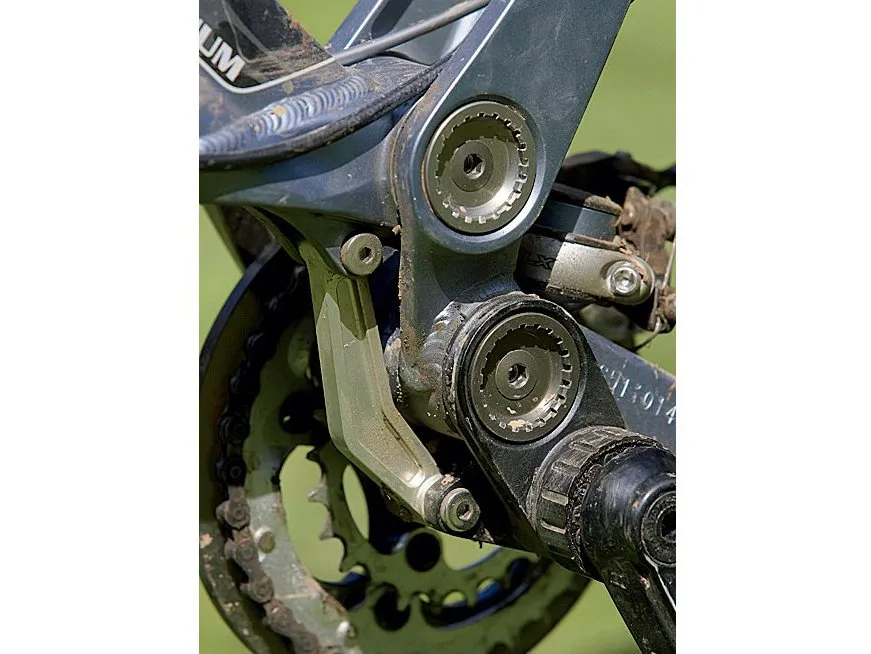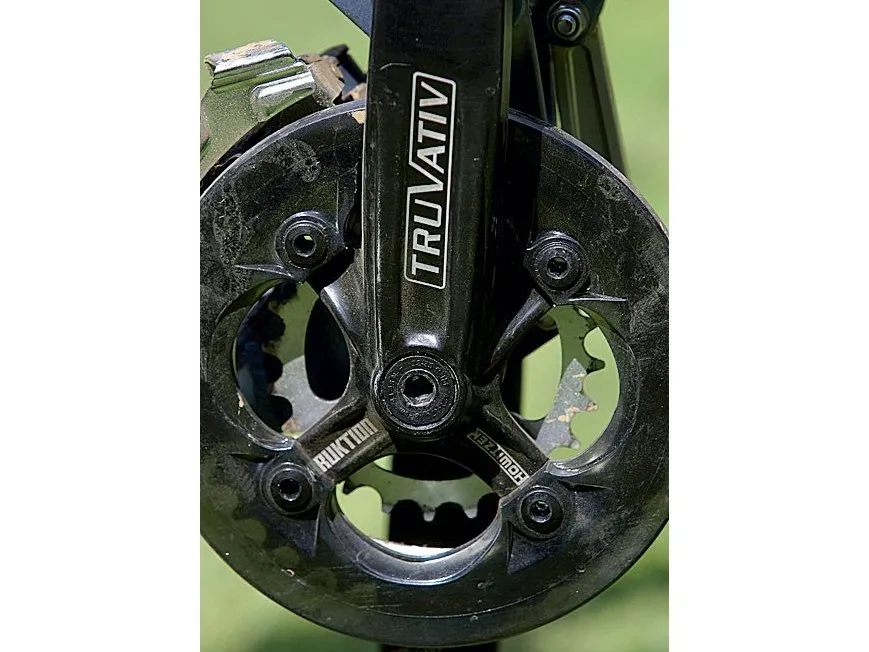GT's i-Drive range covers almost every conceivable type of riding these days. The Ruckus 7 3.0 is one of the cheapest in the 180mm (7in) travel line-up. It sits under GT's downhill/freeride banner but it's a great harder-hitting alternative to GT's 130mm (5in) travel all-mountain bikes. For a lot of riders, a bike like this is a perfect entry point to downhill racing. It offers a wide enough gear spread to pedal back up again, but the emphasis is always going to be on the downs.
The Frame
GT's i-Drive chassis is now one of the best all-round suspension systems out there. It's an unusual design in that the crankset sits underneath both the mainframe and the swingarm but it's linked to both. The idea is to counteract chain tension as the shock compresses. This system works - even with nearly 180mm of travel - and is a very pedal-efficient chassis.
The frame looks complex but it's actually very much a case of form follows function. Some riders think it's ugly and others find the radically sloping seat mast difficult to deal with because the reach changes so much as you change the saddle height. But, for riders who feel at ease with the sizing, it works. With the saddle high you feel like you're on a cross-country bike and with the saddle low you get the more compact feel of a downhill bike. Beware though - the distance you can drop the saddle by is restricted by the shock position.
The frame is heavily reinforced in all the spots that matter and we love the way the linkage bearings are actually bottom bracket bearings that you can service with a bottom bracket tool. There's loads of mud room and standover height and the rear dropouts and Manitou Stance Blunt fork are set up for through-axles. The fork offers 150mm (6in) of travel. The rebound damping is good but there's no leg-top compression adjustment so standing climbs are wallowy affairs. Still, it's a decent downhill-worthy fork at this price.
the faster you ride, the better the bike feels
The Equipment
The parts are all fairly bombproof, as befits a rig like this. The drivetrain matches a SRAM X-7 rear mech and shifters with a Shimano LX front mech and Truvativ's Howitzer Ruktion cranks, with two chainrings and a rock guard. The wheels feature a 20mm through-axle hub up front and a 12mm through-axle out back. Both are laced to Alex DP20 freeride rims, which are shod with Tioga's super-grippy Blue Dragon treads and the brakes are powerful Hayes Sole discs with independent pad adjustment. Truvativ supply a 27in Hussefelt bar, a double-clamp stem and a seatpost that's long enough for riders up to 6ft 1in to fit the Medium bike...which is good because there's no Large.
The ride
As soon as you climb aboard the Ruckus you know it's going to offer you a totally different ride experience to bikes like the Marin Rock Springs or Mythic Wraith. This bike is certainly at the downhill end of the all-mountain scale. It eats terrain like a downhill bike, and carries the associated heft. At 40lb (that's 7lb more than the Marin, 6lb more than the Specialized and 4lb more than the Mythic), it's a burden on climbs, although the gearing means nothing is out of the question if you work at it.
The surprise is that you rarely notice the downhill heft on flat trails, partly because the rear suspension doesn't suck pedal power away. On the contrary, after the initial 'getting used to it' period, you'll be using the effects of the chain growth, slight shock extension and shifting crankset to kick your way out of slow-down corners as soon as the roughest ground is out of the way. A slight spring-loading effect occurs and then releases every time you pump the pedals on bumpy terrain. The suspension stiffens a bit when you push on the pedals, but most riders soon love this and use it to great effect.
As with most big terrain, long travel bikes, a high (14.5in) bottom bracket height makes for a very ponderous feel on slow, technical terrain. Speed's your friend here - the faster you ride, the better the bike feels. This translates into a lot of fun on gnarly singletrack or challenging downhills. You'll take more calculated risks on the GT than you would on any of the other bikes. On rocky downhills it's as good as most downhill-specific bikes, but it's way better than most downhill bikes on flattish, pedally singletrack and it'll get you up hills as long as you're prepared to sit and patiently spin.





